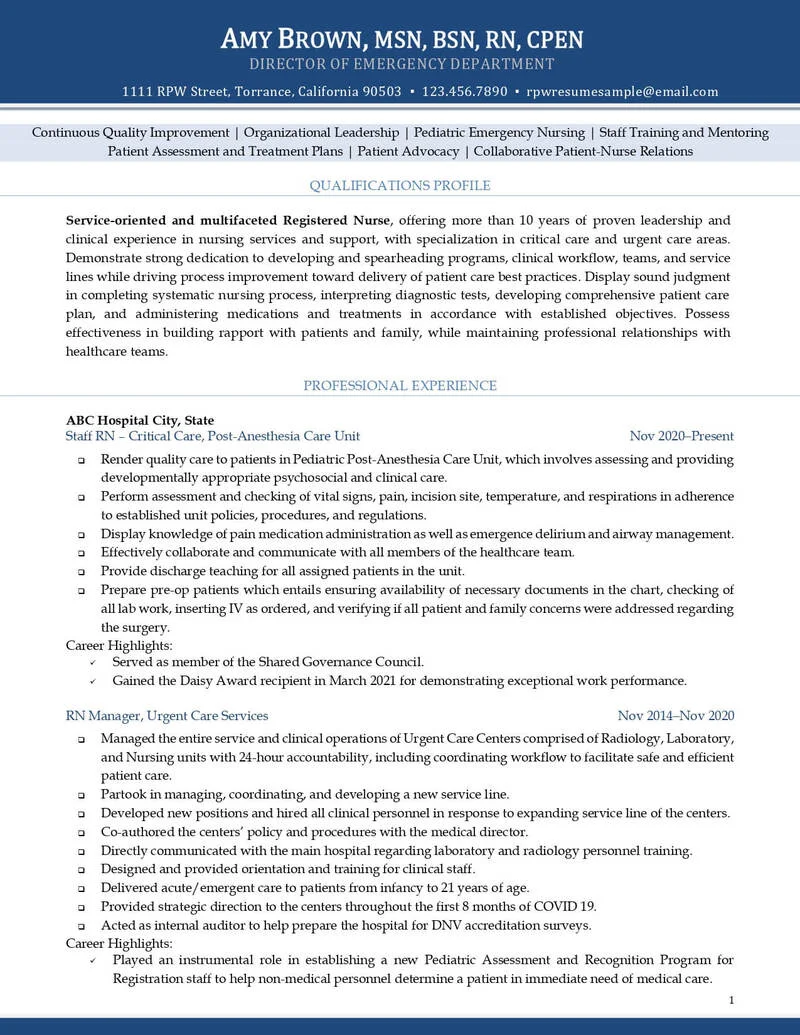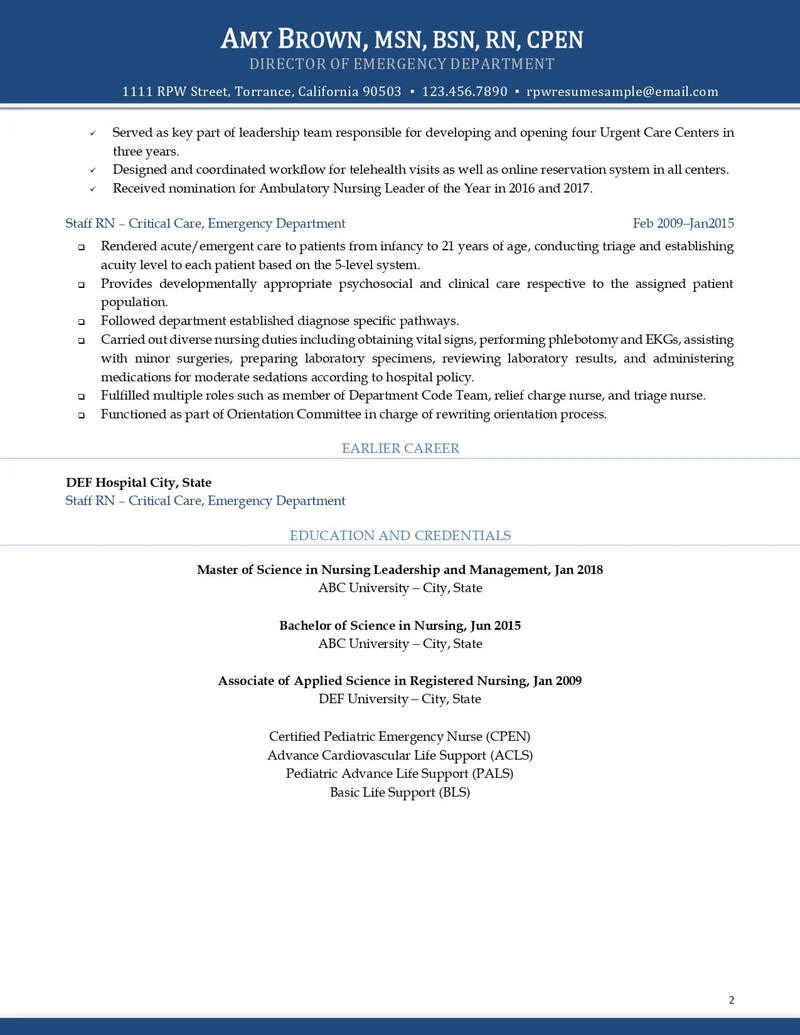Someone with a proven history of accomplishments and successful work experience is more likely to be hired by any employer. That being said, how would you convince recruiting managers of your success? To start off, make sure that your resume format is correct. There are several resume formats, but a chronological resume will be your best bet if you’re a job seeker looking for a position that’s in line with the ones you’ve held for years.
If you haven’t heard about it, or you’ve never created a chronological resume before, then read on to discover how a chronological resume might be the best option for you, what it does well—and how to properly format one so that you can use this resume type to your advantage.
What is a Chronological Resume?
A chronological resume, often known as a reverse-chronological resume, is one of the most widely used resume formats among job seekers. It draws a recruiter’s attention to your work history by stressing and focusing on your most notable accomplishments, responsibilities, and associated job skills and talents.
In this resume, your employment history is listed in reverse-chronological order, beginning with the most recent position and working your way back to earlier roles. Additionally, apart from having the easiest structure, a chronological resume makes it simpler for hiring managers to assess a candidate’s suitability for the job.
Chronological resumes are also excellent for displaying your career’s growth over time and showcasing your capacity to succeed in your field without taking extensive employment breaks.

When to Use a Chronological Resume
Since this highlights an applicant’s work history, a chronological resume works best for candidates with extensive work experience and for those who are searching for jobs in the same field. However, in addition to having solid work experience, using a chronological format can be more useful in the following situations:
- You’ve achieved a consistent advancement in your career. It is easy for a recruiter to track your career progress with a chronological resume. This type of resume underlines your skills, experience, and accomplishments. These details are what most employers are eager to know about when hiring and can serve as proof that you are a driven, desirable candidate.
- You are seeking a position within the same field. In this scenario, a chronological resume can show the employers that you are already working in your preferred field and that your skills are current, which is an aspect that increases your chances over competing candidates.
- There are no gaps in your employment history. Since a chronological resume provides a thorough overview of your career, it is considered the best resume format for demonstrating consistent employment and making your extensive, gap-free experience readily available to all potential employers.
When to Use a Different Resume Format
The chronological resume is the obvious option for the majority of job seekers. It is popular, highlights the important areas, recruiters prefer it over other formats, and most especially the applicant tracking system (ATS) can quickly scan it. However, this does not imply you should automatically cross the other choices off your list, much more if your employment experience is limited.
You might also want to steer away from using the reverse-chronological resume format if you lack experience, are changing careers, or have a big gap in your employment. For these kinds of situations, there are alternative resume formats to consider, including:
- Combination resume. This is ideal for those who want to take on leadership and executive-level roles in various fields. This hybrid resume format is also ideal for candidates who’ve developed a strong set of skills and achievements because it highlights both your expertise and employment history.
- Functional resume. This is the best choice for individuals who are either applying for their first job, took a break from the workforce, are fresh graduates, or are professionals shifting careers. This style of resume is useful in drawing attention to their unique qualities, abilities, and qualifications as opposed to the chronological resume, which is primarily focused on an applicant’s job history.
- Targeted resume: This is beneficial to use if you want to work in a specific role and industry but have a diverse employment background. A targeted resume raises your chances of being called in for an interview as it tailors your qualifications to fit the needs of the specific position and field.
Related Article:
How to Write a Chronological Resume
Now that you know what it can accomplish, the next question is how to structure one properly. A chronological resume is extremely simple to format. Before you begin writing your resume, take time to remember and gather important data like your job title and dates of employment. Once you’ve gathered all the necessary information, it’s time to arrange the resume section. Although some sections may vary depending on your focus or career field, a chronological resume is typically formatted as follows:
1. First, include contact information in your chronological resume.
Basically, this part outlines who you are and how the recruiting manager can get in touch with you. In this section, state your name, phone number, and email address. You may also want to include the URL of your online portfolio as well as any other social media accounts you have, such as LinkedIn, Twitter, and a business website. Many professionals have this and employers will want to check you out on this platform to ensure that the information on these pages matches the information on your resume.
2. Create a strong introduction or a summary of your qualifications.
The next section on your resume is known as the qualifications profile or resume summary. This is where you describe yourself to potential employers and explain what you can do for them. It is meant to grab the attention of whoever is reading your resume, so it should cover your selling point and describe your most valued skills and abilities you have in three to five sentences.
Expert Tip:
You don’t need an “objective” section on your resume anymore. Instead, concentrate on developing a strong resume profile that will appeal to employers.
3. Make your chronological resume stand out with your skills
In chronological resumes, a mix of hard and soft skills works well because both types of skills are often acquired through your professional experience. To build your skill section, review your previous positions and evaluate the abilities or knowledge you used the most frequently, as well as which skills you honed as a result of those jobs. You might also want to include some industry keywords from the job posting in your skill section to boost the chance of your resume passing the ATS system.
Still not sure what to put in your skill section? Some examples of top skills to mention in your chronological resume are as follows:
Hard Skills
- Project Management
- Customer Service and Client Support
- Office Administration
- Process Improvement
- Policy Implementation and Compliance
Soft Skills
- Leadership Skills
- Teamwork and Collaboration
- Communication Skills
- Problem Resolution
- Critical Thinking
Related Article:
4. List and describe your work experience in reverse chronological order.
This section is the heart of your chronological resume, so make sure to list every important detail of your employment background. In reverse-chronological order, list every relevant position you’ve held, starting with your most recent assignment. Don’t forget to include the name of the company, the dates you worked there, and the positions you had.
Underneath each position, list down five to ten bullet points explaining your main responsibilities and obligations. Use an action verb at the beginning of each bullet point to make your job experience more interesting to read. By using action verbs, you’ll also offer the HR manager the impression that you’re proactive at work and make it simpler for them to comprehend exactly what you can accomplish at work.
Expert Tip:
Emphasize your accomplishments. Add concrete figures and statistics to your bullet points to make your accomplishments measurable and allow the hiring managers to see and better understand how you contributed to your past jobs.
5. Include your educational background in your chronological resume.
At the bottom of your resume, include your education. Start with your highest degree and work your way down, just like with work experience. List all the colleges and universities you have attended along with the degrees or diplomas you have earned from each. Include details about any accolades you have received, such as summa cum laude or magna cum laude. You can also add your GPA, including your overall GPA, major GPA, or any school or college GPA that is higher than 3.5.
Unless you have no college education, avoid listing your high school diploma. Your future employers do not need to be aware of your high school credentials if you have completed a college degree.
6. Add a professional development section.
Although it is optional, this section can be used to highlight additional qualifications you may have. If you have certifications and licenses, training you’ve completed, or other seminars you’ve attended that are pertinent to your target positions and can help you stand out in your industry, don’t be afraid to highlight them here!
7. Include additional sections that may support your application.
Awards, presentations, publications, affiliations, or even activities can be incorporated into your chronological resume if they are relevant to your target position. Including them on your resume can get you extra points and possibly set you apart from the competition.
8. Finally, ensure your resume is error free.
Your resume must grab the attention of potential employers for the right reasons—your impressive job history—and not the incorrect ones such as typos and grammar mistakes. To find any errors or strange-sounding phrases, proofread your resume and then have a second, trustworthy set of eyes review it.
Chronological Resume Examples
Here is an example of a chronological resume written using the guidelines listed above. Use this along with our other resume samples as inspiration as you write your own:


Let Our Professionals Assist You in Showcasing Your Impressive Work History!
A chronological resume is effective for people who have worked in a particular field or business for a considerable amount of time, as it demonstrates the applicant’s consistency and expertise in that field. So, if you’re seeking employment and have a lot of experience to offer, create your own chronological resume now by following the resume guidelines outlined above and wow your potential employer.
If you need help creating a chronological resume, Resume Professional Writers can assist you. Benefit from the best professional resume writing service to prepare your own chronological resume by contacting one of our career coaches today.








